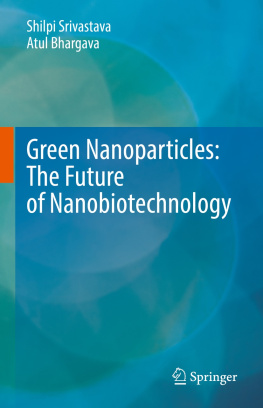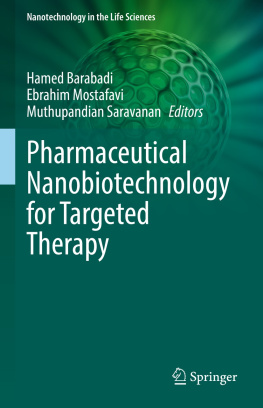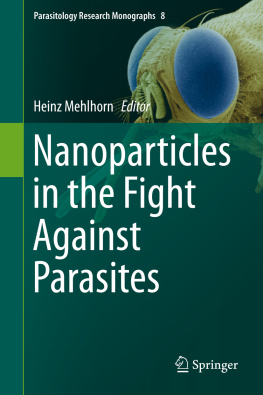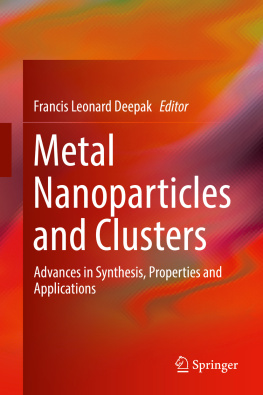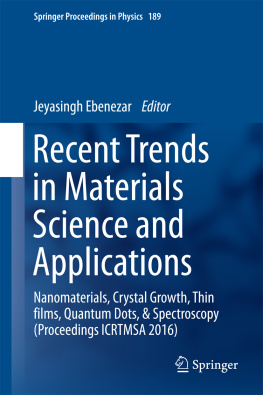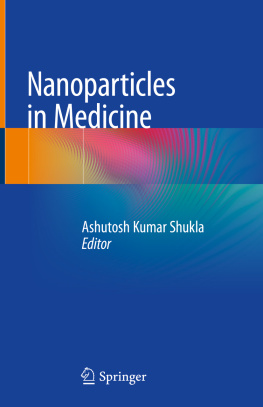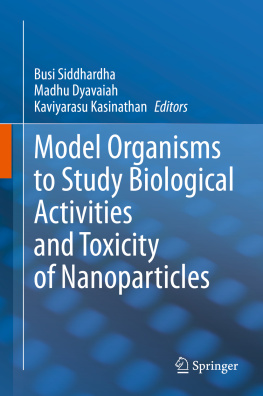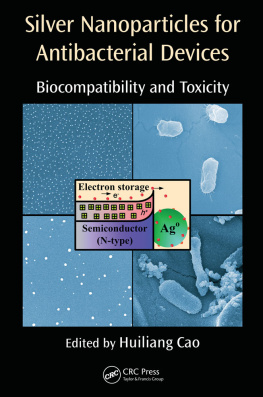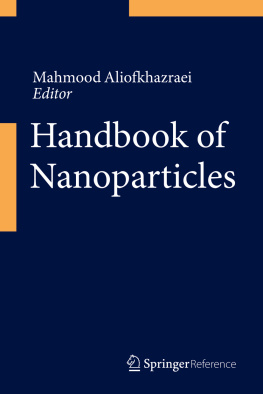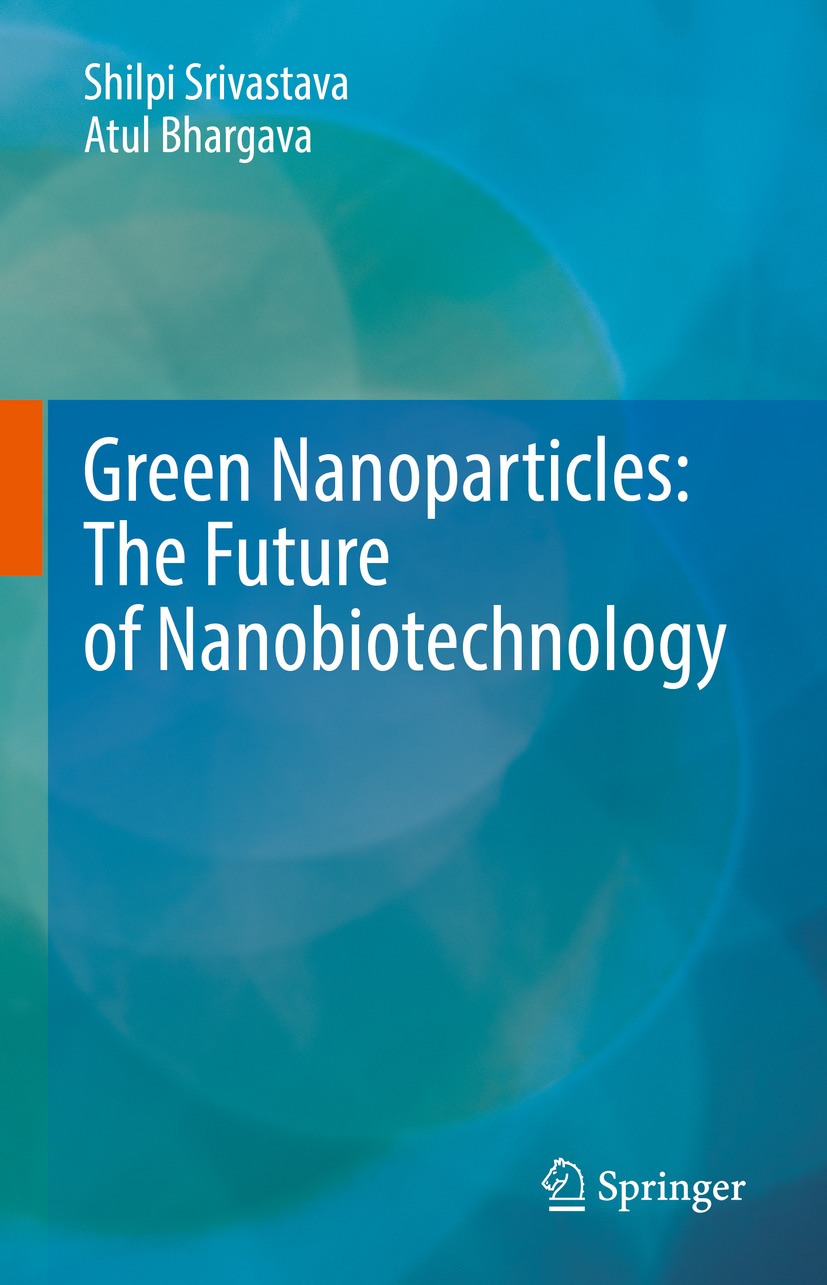Shilpi Srivastava and Atul Bhargava
Green Nanoparticles: The Future of Nanobiotechnology

Logo of the publisher
Shilpi Srivastava
Amity Institute of Biotechnology, Amity University Uttar Pradesh, Lucknow Campus, Lucknow, Uttar Pradesh, India
Atul Bhargava
Department of Botany, Mahatma Gandhi Central University, Motihari, Bihar, India
ISBN 978-981-16-7105-0 e-ISBN 978-981-16-7106-7
https://doi.org/10.1007/978-981-16-7106-7
The Editor(s) (if applicable) and The Author(s), under exclusive license to Springer Nature Singapore Pte Ltd. 2022
This work is subject to copyright. All rights are solely and exclusively licensed by the Publisher, whether the whole or part of the material is concerned, specifically the rights of translation, reprinting, reuse of illustrations, recitation, broadcasting, reproduction on microfilms or in any other physical way, and transmission or information storage and retrieval, electronic adaptation, computer software, or by similar or dissimilar methodology now known or hereafter developed.
The use of general descriptive names, registered names, trademarks, service marks, etc. in this publication does not imply, even in the absence of a specific statement, that such names are exempt from the relevant protective laws and regulations and therefore free for general use.
The publisher, the authors and the editors are safe to assume that the advice and information in this book are believed to be true and accurate at the date of publication. Neither the publisher nor the authors or the editors give a warranty, expressed or implied, with respect to the material contained herein or for any errors or omissions that may have been made. The publisher remains neutral with regard to jurisdictional claims in published maps and institutional affiliations.
This Springer imprint is published by the registered company Springer Nature Singapore Pte Ltd.
The registered company address is: 152 Beach Road, #21-01/04 Gateway East, Singapore 189721, Singapore
Preface
Nanobiotechnology has been proposed as the next general-purpose technology and engine for growth in the twenty first century. Applications employing nanotechnologies promise greater access to knowledge and information; new therapeutic interventions; improved environmental monitoring; greater safety and security; expanded communication capacities, and many other industrial and societal applications. The global nanotechnology market valued at nearly $1.05 billion in 2018, is expected to reach $2.23 billion by the year 2025 with an expected compound annual growth rate of 10.5% from 2019 to 2025. Millions of workers will be employed in nanotechnology-related industries, and many more will be part of supporting jobs like academics.
Nanoparticles are microscopic entities with at least one dimension less than 100 nm. These are gaining increasing attention due to their immense use in optics, electronics, and biomedical sciences. Synthesis of nanoparticles has been carried out through two approaches, viz. the top-down and the bottom-up approaches. In the top-down approach, a big component is broken down into smaller ones of desired size, while the bottom-up approach is primarily a build-up method that starts from atoms and is based on atomic transformations and molecular condensation. The physical methods are energy intensive, require costly vacuum systems or equipment to prepare nanoparticles besides having limitations like use of high temperature and not being environment-friendly. The chemical methods generally increase the particle reactivity and toxicity, and might harm human health and the environment due to the composition ambiguity and lack of predictability. Toxic chemicals accumulate on the surface of nanoparticles and nonpolar solvents that often limits their applications in biomedical applications. These production methods are expensive, labor-intensive, and are potentially hazardous to the environment as whole and living organisms in particular. There is an urgent need to develop environmentally friendly methods of synthesis of nanoparticles through techniques that are clean, biocompatible, nontoxic, and environment-friendly. Within the realm of green nanotechnology, biological synthesis of nanoparticles forms the most important component and has captured the fascination of the researchers the considering long-term sustainability goals. Use of living organisms or their biomass could be an alternative to the conventional chemical and physical methods of nanoparticle synthesis. Considering the vast potentiality of microbes and plants as sources, the biological synthesis can serve as a green technique for the synthesis of nanoparticles as an alternative to conventional methods. The biocompatibility of biologically synthesized nanoparticles offers very interesting applications in biomedicine and related fields.
Thus, the time is ripe for a comprehensive book which not only deals with the fundamental concepts on green synthesis of nanoparticles but also incorporates all the latest developments in this branch of science. The book describes the recent developments with respect to synthesis, characterization, and applications of nanoparticles in an easy-to-read, succinct format, and guides the readers to these technologies in a simple way. Spread over 16 chapters, the book gives an overview of the latest research and developments in the above-mentioned areas with added coverage of recent researchers in the field. Different groups of plants used in bionanofabrication have been dealt with in separate chapters. The topics are presented in a lucid, methodical way and care has been taken to keep the level of discussion simple and free from technical jargon.
The book will cater to advance undergraduate and post-graduate readers in nanobiotechnology, and practicing nanotechnologists. The book will also be of interest to researchers working in nanobiotechnology, nanosciences, pharmaceutical sciences, medical sciences, and general biology.
Shilpi Srivastava
Atul Bhargava
Lucknow, India Motihari, India
Acknowledgments
Shilpi Srivastava
I am deeply indebted to my parent organization Amity University Uttar Pradesh, and Dr. Aseem Chauhan, Chairman, Amity University Uttar Pradesh (Lucknow Campus), for providing me a suitable forum to fulfill my ambitions. I owe my deepest sense of veneration and gratitude to Dr. Balwinder Shukla, VC, and Dr. Sunil Dhaneshwar, Pro VC, AUUP, Lucknow Campus, India, for giving me an opportunity to be a part of their prestigious and renowned institution without which this would not have been possible.
I also wish to thank Dr. J.K. Srivastava, Director, Amity Institute of Biotechnology, Lucknow, for his constant support and encouragement. I thank my colleagues and friends at Amity University namely, Dr. Prachi Srivastava, Dr. Rachna Chaturvedi, Dr. Jyoti Prakash, Dr. Gurjeet Kaur, Dr. Vineet Awasthi, Dr. Ruchi Yadav and Dr. Garima Awasthi for their support and psycho-stimulant company.
Atul Bhargava
I am highly grateful to Dr. Sanjeev Kumar Sharma, Vice Chancellor, Mahatma Gandhi Central University, Motihari, for his inspiring leadership and facilities provided in the University which helped me in accomplishing this task.

